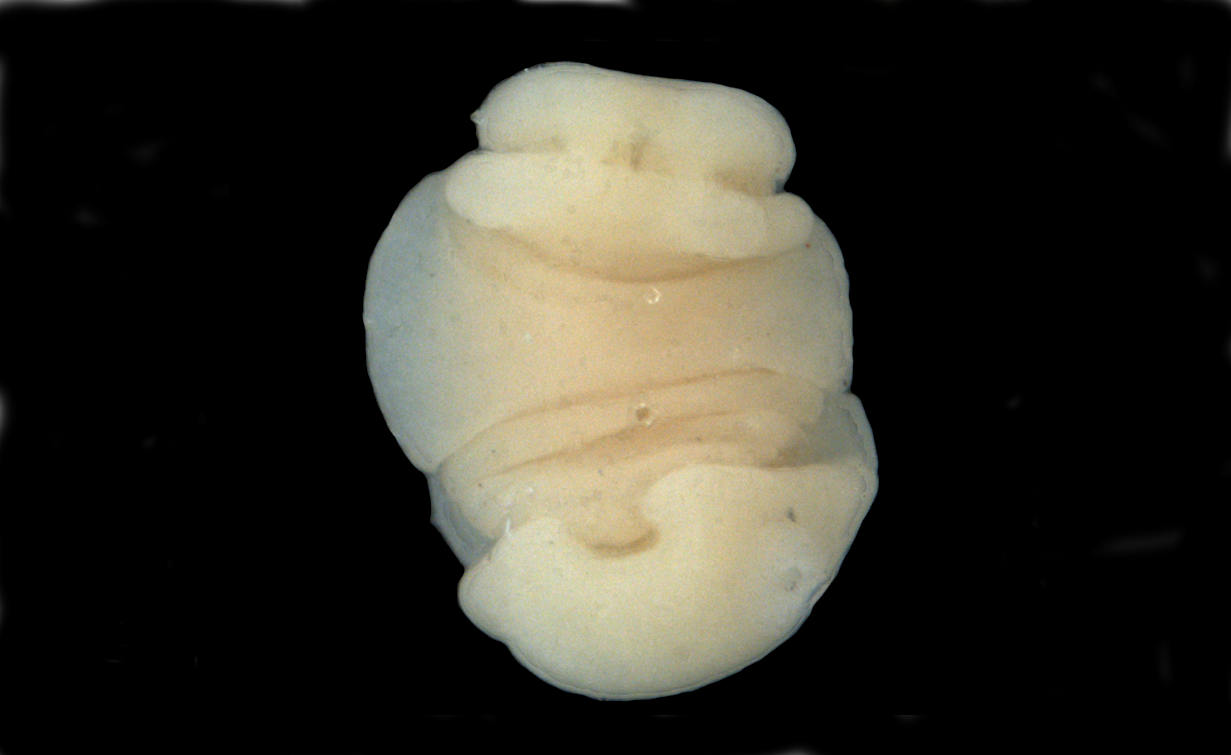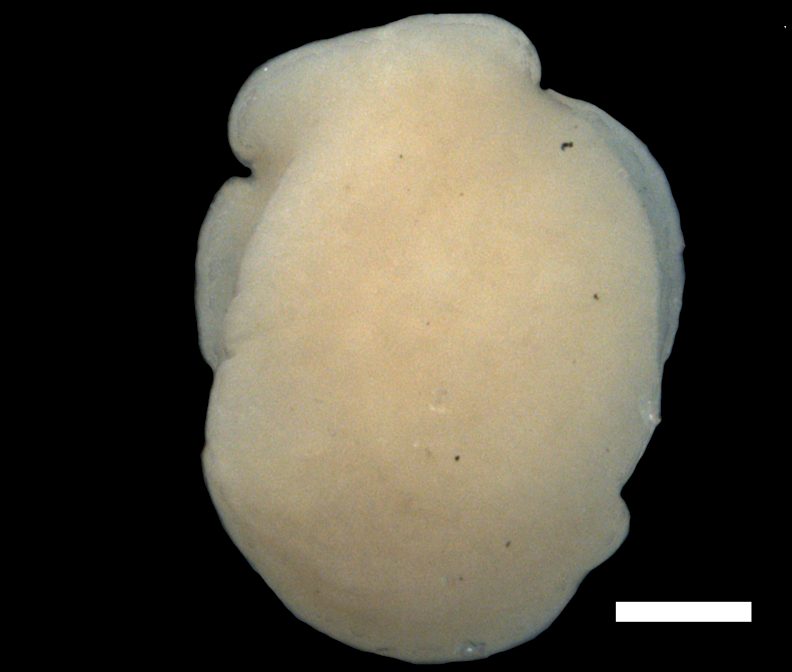Philinoglossa helgolandica
Shell description
The shell is absent (Thompson 1976) or extremely reduced as in all species of the family Philinoglossidae.
Animal description
The body is transparent grayish in colour, with dark longitudinal bands on the head and black dots on the body and foot (Thompson 1976).
Anatomy
The radula consists of 15–19 rows of teeth with two outer lateral teeth and one inner lateral tooth on each side. The central (rachidian) tooth is absent. The outer lateral teeth are curved and have a broad base, the outer edge smooth (Thompson 1976). The inner lateral teeth are curved and have a broad base; the inner edge carries denticles. The gizzard is rounded, not surrounded by muscle fibres, and does not contain plates (Thompson 1976).
Ecology
Occurs at depths of 30–45 m, on shell sand and shell gravel (Thompson 1976).
Geographical distribution
Occurs in Korsfjorden, Norway, Plymouth, England, Helgoland, Germany and Banyuls, Mediterranean France (Thompson 1976).
References
Thompson TE (1976). Biology of Opisthobranch Molluscs. The Royal Society: London. 203 sider.



